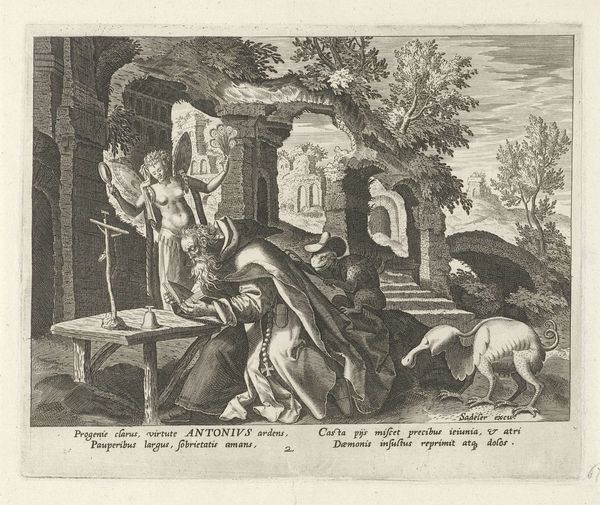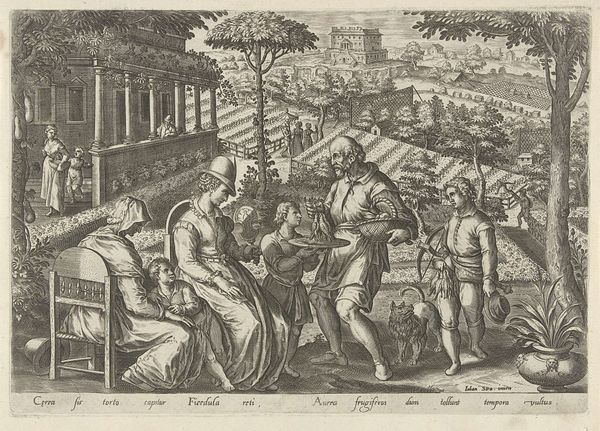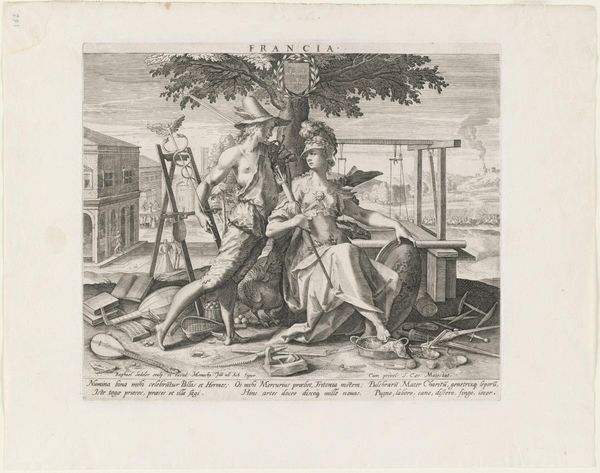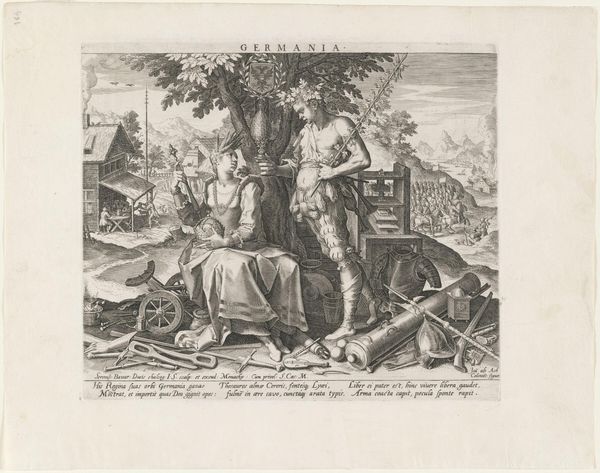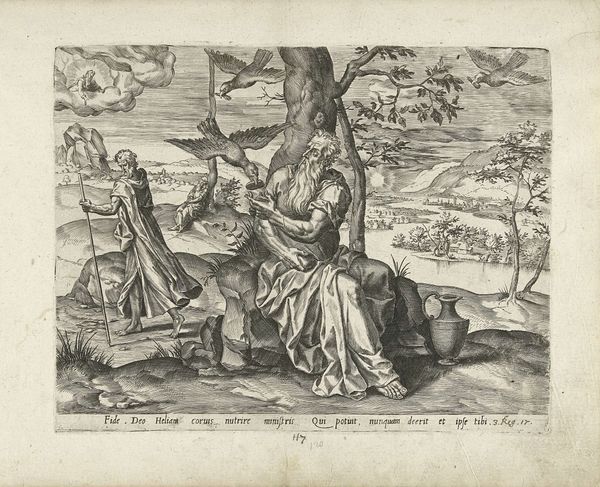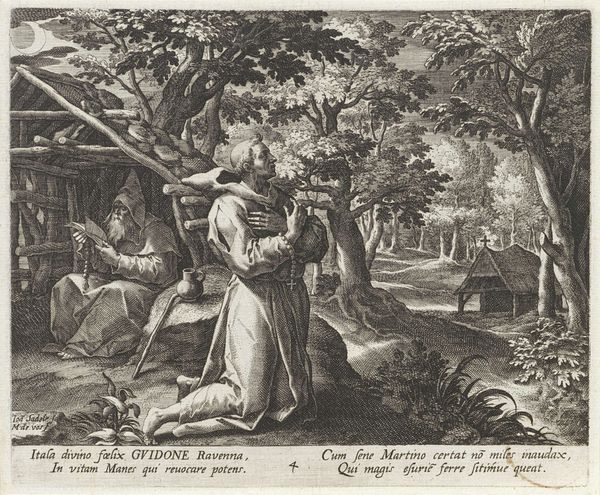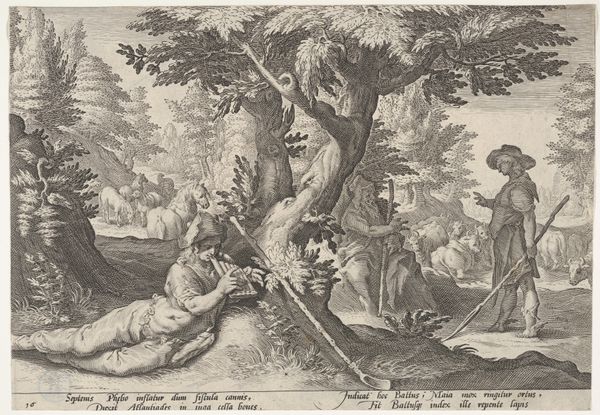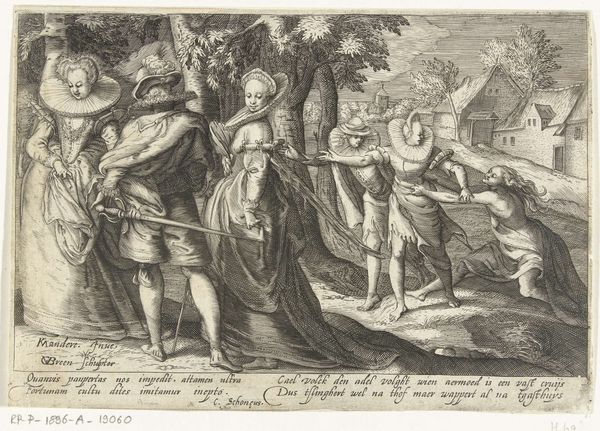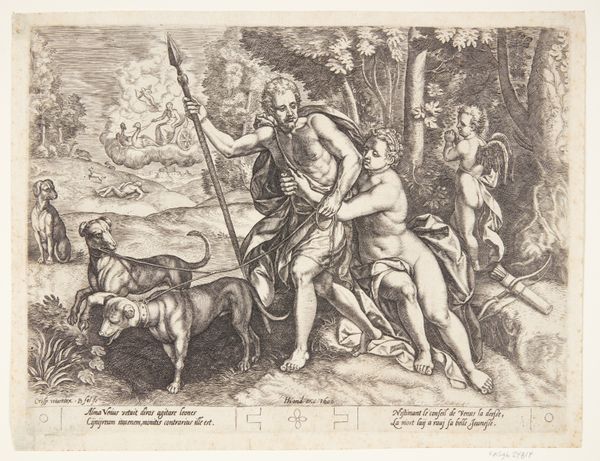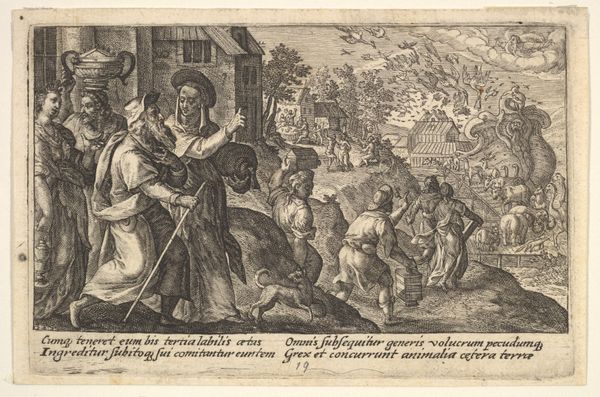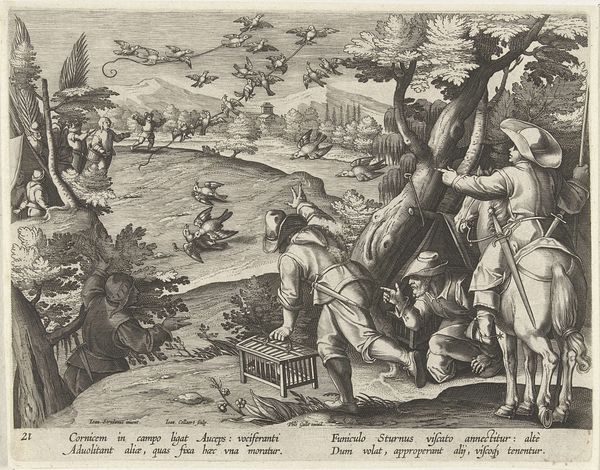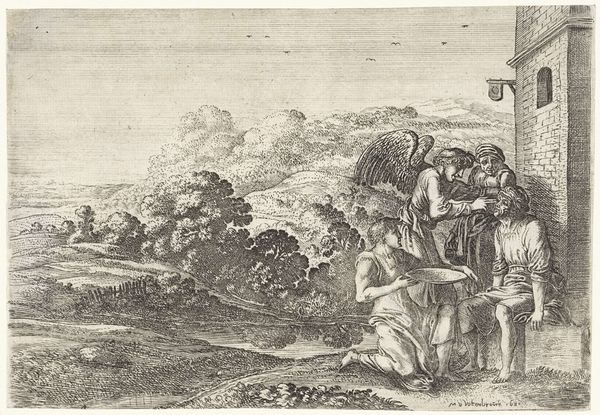
print, engraving
# print
#
mannerism
#
history-painting
#
engraving
Dimensions: height 220 mm, width 257 mm
Copyright: Rijks Museum: Open Domain
Curator: Immediately, the cross-hatching in this engraving provides incredible depth to the composition. I’m struck by how meticulously each line is placed to give shape and texture. Editor: I agree, the technical skill is undeniable. We’re looking at "Germania with Ceres and Bacchus," created by Johann Sadeler I between 1588 and 1595. It’s currently held at the Rijksmuseum. But, technically proficient as it is, it reads to me as propagandistic and idealistic. Curator: Can you expand on that? Editor: Well, considering this engraving comes at a turbulent time in German history, and looking at the title, “Germania,” along with Ceres, the Roman goddess of agriculture, and Bacchus, the god of wine, and finally that landscape scene of plenty on the left side. All those put together give a very clear message about what the region offered to its people, particularly wealth and abundance. But, what isn't said might be more important here. Curator: Precisely! Note the allegorical representation of Germania, her placid pose suggestive of maternal plenty. How her gesture is carefully designed to emphasize themes of earthly abundance and power while also subtly promoting certain societal values and political agendas of the time through allegory and symbolism. Editor: Don’t forget the cannon and armed soldiers! That also adds a bit of edge, the protective and war-ready side to Germania. I think those create a potent mix, blending agriculture, revelry, and military readiness into a unified vision of a region confident of its position. Curator: Exactly. It synthesizes various formal elements—texture, line, composition—into an effective symbolic framework, really indicative of the Mannerist period. It displays a carefully arranged tableau of societal, and I might even say, *cultural* elements. Editor: Yes. It invites us to consider how artistic representation can actively participate in constructing identity and justifying power. Seeing the past presented like this certainly helps sharpen my critical eye to what the present tries to say. Curator: And on my end, a reminder to constantly reconsider the aesthetic qualities of works, never merely accepting context, but continuously investigating formal construction!
Comments
No comments
Be the first to comment and join the conversation on the ultimate creative platform.
